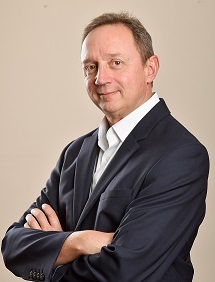The Answer is in the Balance Sheet

Written by Michael Warrington, Chief Executive Officer AX Group
Business restructuring is tricky. There are a number of angles that can be adopted to turn a business around but the approach that I have always preferred is to start with a close examination of the balance sheet. It is there that many of the answers to the strategies that would be adopted will lie.
The balance sheet tells the story of what the business owns and what it owes. By delving into the numbers one begins to understand the challenges and opportunities that the business is facing.
Throughout my career, I have found business transformation exciting. I have been involved with numerous businesses in different industries varying from banking, travel and tourism, airline, construction, development, hospitality, healthcare, and financial services. In each of the businesses, I was always able to identify the key elements that made the business successful and then to look at the processes and identify ways to simplify and automate things.
I have been involved with the AX Group for almost 20 years and during that time I have seen the group grow and flourish. In the early days, the group was asset rich but like many companies in their growth phase, cash flow was challenging. I developed a good working relationship with AX Group chairman Angelo Xuereb. The combination of his entrepreneurial skill and my own financial acumen has served the AX Group well. One of the biggest tasks for the group was the transition from a family-run business to a corporation with a clear second-generation succession plan in place and strong management structures being implemented.
I think our prime objective now is to build clear structures within what is a very complex group of companies and to instil a culture of how structured decision-making should be undertaken. It is growing into a more formal and corporate structure than the one that existed in the past.
The group is also focusing heavily on its IT infrastructure to efficiently analyse market information and make informed decisions at all structure levels. I continuously ask myself questions about how we can improve things as there is always room for investment.
The group is asset rich and given the nearly 45 years of the company history, there are assets that are already in different stages of their ‘life’. AX Sunny Coast, which has been the first hotel investment is now 40 years old. One has to look at the property and ask if it stands the test of time or should be adapted? AX Group pioneered the timeshare market at the time. The self-catering apartments were big with large kitchens. Maltese and foreign holidaymakers alike travelled in big numbers. Perhaps families were bigger, perhaps the way people travelled was different. In either case, today people hop on a Ryanair for a weekend break and they don’t necessarily need large indoor areas for their leisure. These are the types of discussions and decisions that one has to make when looking at the business and its balance sheet. It will make me ask these questions and dig deeper to find the answers.
Spread the net wide but don’t spread yourself thin
The diversification from AX Construction to AX Development happened fairly quickly and was a natural progression. The Group built capital on the construction work that was contracted and started investing in the development of its own properties. The big jump was into hospitality. AX Group wanted to be involved in long term projects that would contribute to the economy of the country. We acquired land in Qawra that was ideal for hospitality development. With the right set of people managing the projects, we developed two properties that mark the beginnings of the AX Hotels chain. The next step was diversifying into care.
Before the AX Group decided to branch out into the care business, which in itself has certain similarities with the hospitality business, the management team carried out a gap analysis in order to understand the strategic assets that were essential prior to take this bold move. In this process, we learnt that we already acquired a number of them already namely the centrality and neighbourhood of the identified site, secondly the technical expertise required to develop a large scale project and thirdly an extensive experience in the four-star and five-star hotel industry. The gap analysis clearly identified an opportunity to acquire talent and expertise from the healthcare sector. We moulded it into the business and created a unique concept – the first retirement village on the island – Hilltop Gardens and Simblija Care Home.
Additionally, the reason for going into the care business was that unlike the construction and tourism sectors it isn’t characterised by cyclical fluctuations.
Work smarter not harder
Innovation more often than not is not revolutionary. It’s what they call creating a better mousetrap. Creating an evolution to what is already there but adding value to a process, to the operations in the restaurant, responding accurately to the market’s needs. These are very important mechanisms that improve the success of the group and the efficiency of my teams. When we acquired Luzzu a couple of years ago we knew that it was a very popular family place. We felt however that it didn’t address an important element that families encounter when going out with small children – entertainment. And so we created Luzzu with a dedicated large play area.
All I can say is that it’s been a very successful journey so far and I am looking forward to the exciting projects in the future with a view to delivering significant shareholder value and returns.


